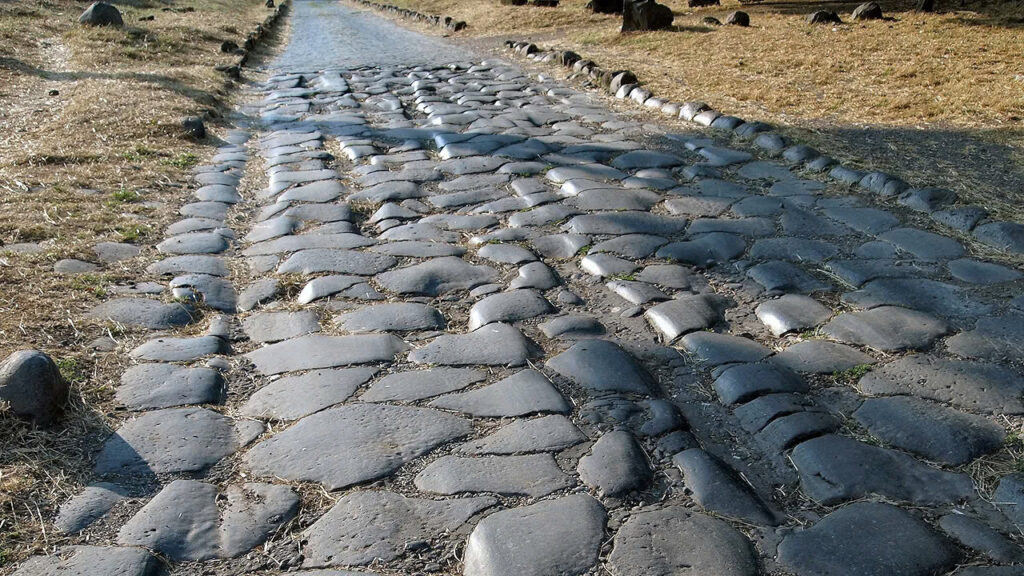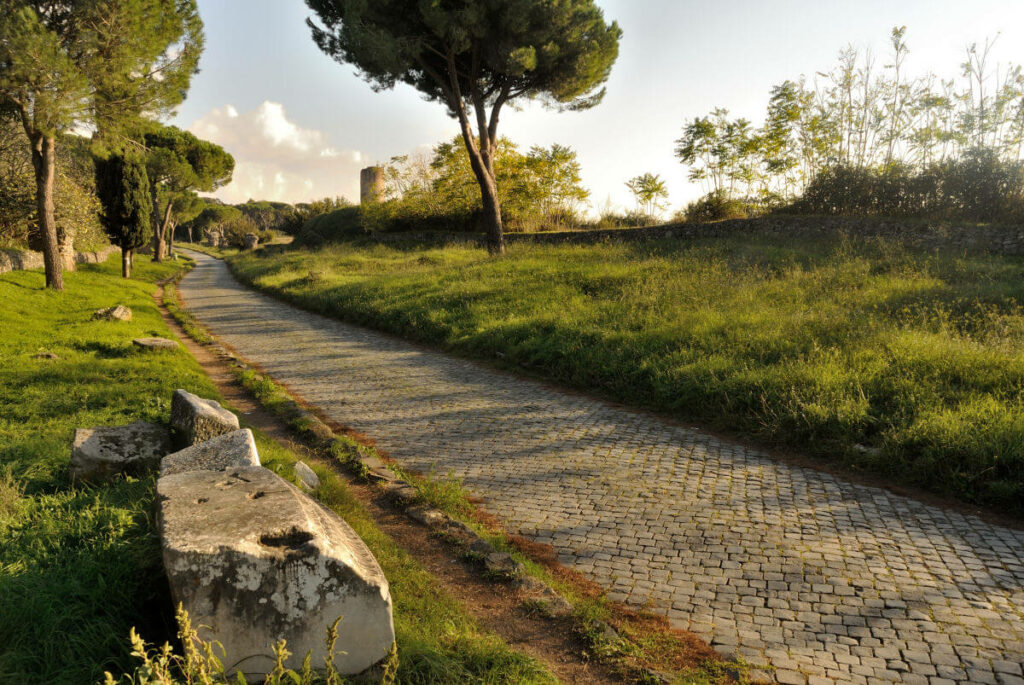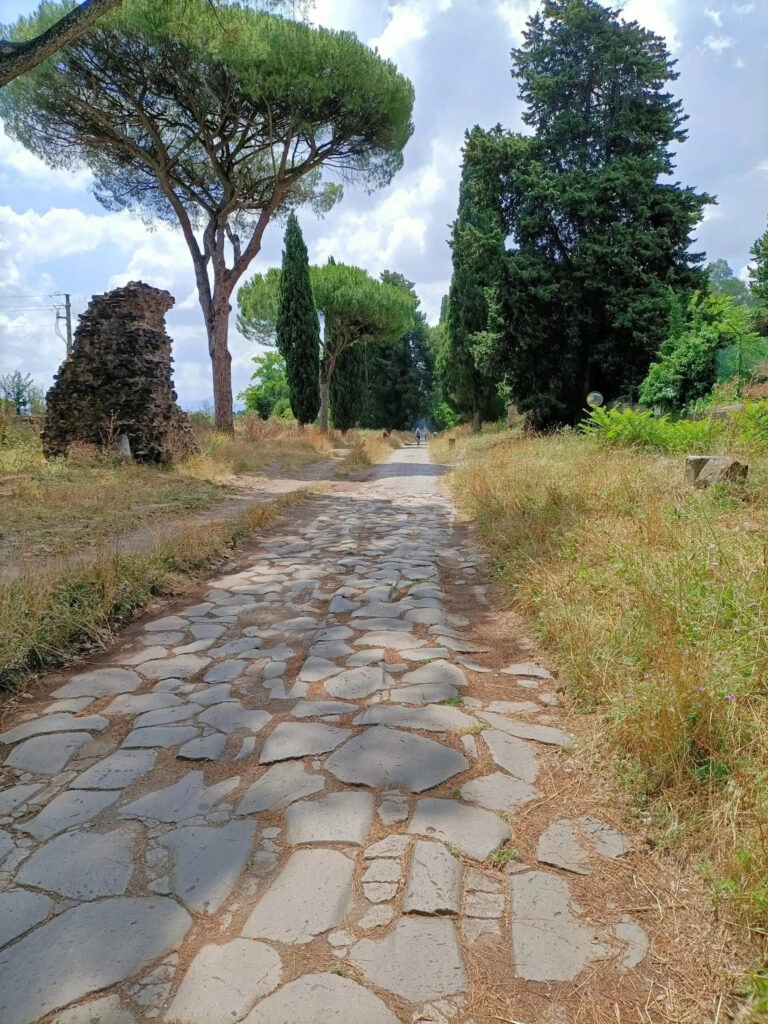The story of the Appian Way is a testament to Roman ingenuity and ambition that continues to inspire us today. Built in 312 BC under the watchful eye of Roman censor Appius Claudius Caecus, this remarkable road stretched over 660 kilometers, connecting Rome to the southern reaches of Italy.
The Birth of a Military Marvel

When the Romans first laid the stones of the Appian Way, their primary goal was military dominance. As the empire fought the Samnite Wars, this road became their secret weapon, allowing legions to move swiftly across Italy. What began as a military pathway, however, soon transformed into something far more significant.
Engineering Beyond Its Time

The construction of the Appian Way revealed the Romans’ extraordinary engineering prowess. Picture workers meticulously layering stone, gravel, and sand to create a surface so durable it would last millennia. They began by digging deep trenches, filling them with large foundation stones, then adding layers of smaller rocks and gravel. The finishing touch? A surface of perfectly fitted basalt stones, creating a road smooth enough for chariots yet strong enough to withstand centuries of use.
From Military Route to Cultural Icon
A Highway of Commerce and Culture

As Rome’s influence grew, the Appian Way evolved into much more than a military road. It became a bustling trade route, with merchants traversing its length carrying precious cargo – wine, olive oil, and grain. The road’s reach to Brindisi, a vital port city, connected Rome to the broader Mediterranean world, facilitating trade with Greece, Egypt, and distant lands.
Symbol of Imperial Might

The famous saying “All roads lead to Rome” found its perfect embodiment in the Appian Way. This wasn’t just a road – it was a stage where emperors and generals paraded their victories, displaying Rome’s might to citizens and foreigners alike. It became a symbol of Roman authority and connectivity, binding together the vast empire through stone and engineering brilliance.
A Legacy That Endures

Today, parts of the Appian Way still stand, a remarkable testament to Roman engineering excellence. Its construction marked the beginning of a vast network spanning 322,000 kilometers, effectively becoming the backbone of the Roman Empire. More than just a road, it facilitated commerce, communication, and cultural exchange throughout the ancient world.
This ancient highway reminds us of the remarkable vision of our ancestors, who built not just for their time but for millennia to come. The Appian Way stands as more than just an archaeological wonder – it’s a symbol of human achievement, showing how infrastructure can shape the destiny of civilizations.

The story of the Appian Way isn’t just about stones and mortar; it’s about the power of human ingenuity to create lasting change. From its military beginnings to its evolution as a cultural and economic lifeline, this remarkable road continues to captivate our imagination, proving that some achievements truly do stand the test of time.

